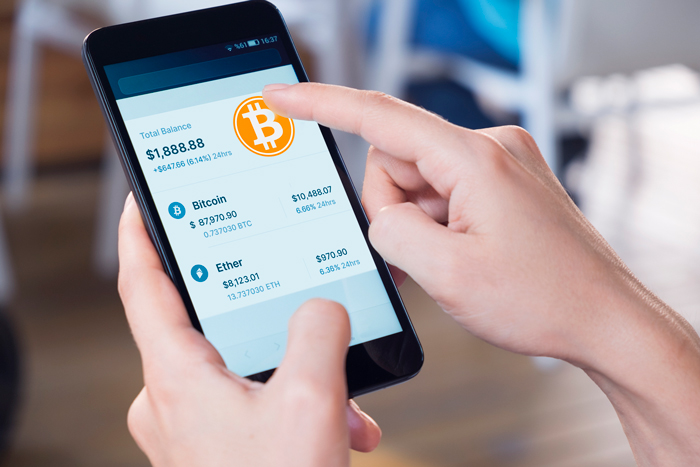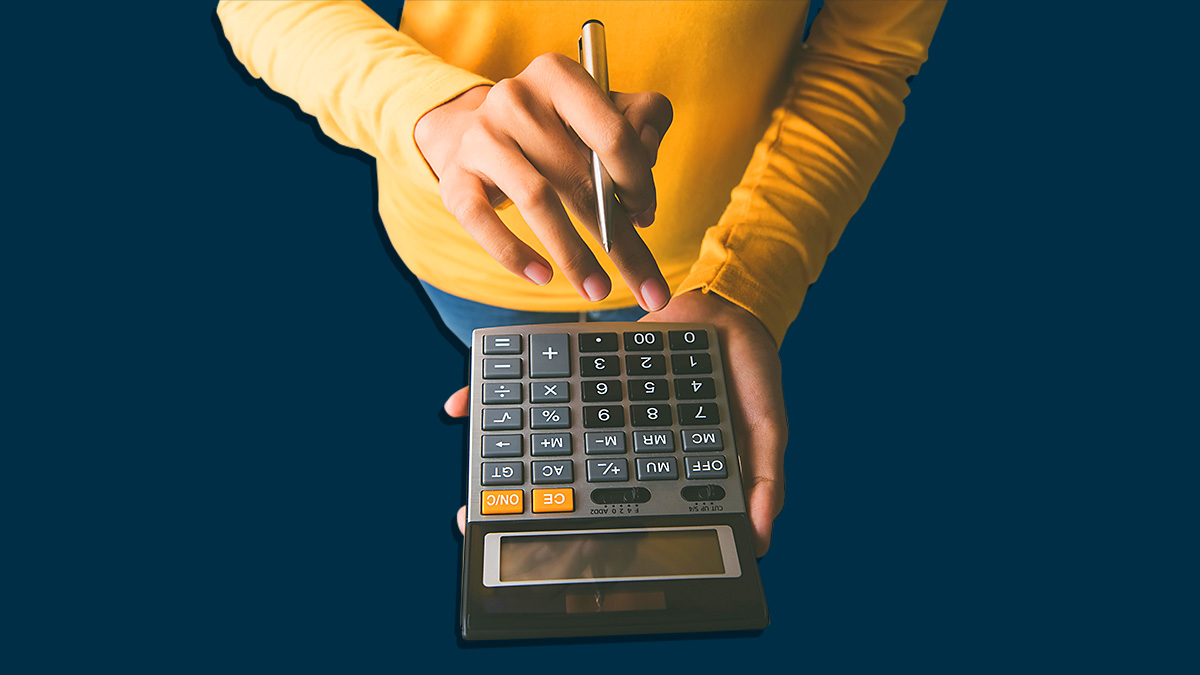Get our independent lab tests, expert reviews and honest advice.
Cryptocurrency scams cost Australians $129m

Need to know
- Aside from cryptocurrency scams in general, crypto investment scams cost Australians $99 million in 2021
- Crypto scammers’ tricks are continually evolving – the latest include fake apps and ATO messages
- Fake celebrity promotions and endorsements play a big part in stealing people’s money through cryptocurrency scams
For many people, cryptocurrencies are a no-go zone. And for good reason. They’re the coin of the realm where no realm exists, and their slippery value depends entirely on what people are willing to pay for them.
In recent years, some people have been willing to pay substantial sums for established cryptocurrencies like bitcoin. Some have bought low, sold high, and made a lot of money. Others have come out on the losing end when trading these volatile digital tokens.
Despite the uncertainties, more and more people appear to be jumping on the cryptocurrency bandwagon in hopes of a windfall. In recent years, many of them have been scammed.
What is cryptocurrency?
Cryptocurrencies (also known as crypto) are digital tokens that, when accepted, can be used for payment from one person to another using complicated online systems.
They are stored in ‘digital wallets’, and some businesses accept them as payment for goods and services, although they are not currently accepted as legal tender in Australia. The crypto market is also not regulated in Australia.
Despite the uncertainties, more and more people appear to be jumping on the cryptocurrency bandwagon in hopes of a windfall
Some of the most popular cryptocurrencies include bitcoin, litecoin, ether and XRP, though each of these has different characteristics.
You can buy or sell crypto via online platforms using Australian dollars and cryptocurrency itself. Transactions are made using blockchain technology, basically an extensive database system. Though the use of cryptocurrency is on the rise, it remains an emerging field with many uncertainties.
Find out more about the basics of cryptocurrencies.
Crypto scams hit $129m in 2021
When we contacted the ACCC in mid-February this year, the agency told us it had received 10,412 reports about cryptocurrency scams in 2021, with losses of about $129 million for the year.
Nearly half (4730) of the 2021 reports were about cryptocurrency investment scams, which cost Australians a total of $99 million. (A cryptocurrency investment scam would generally mean investing your dollars or legitimate cryptocurrency in a fake cryptocurrency investment scheme.)
Boom times mean more scams
Professor Talis Putnins, professor of finance at the UTS Business School and chief scientist of the Digital Finance Co-operative Research Centre, Sydney, tells CHOICE that trends in cryptocurrency scams generally follow the state of the cryptocurrency market.
“We find that cryptocurrency scams, including pump and dump schemes, tend to correlate with the overall cryptocurrency price levels – when cryptocurrency markets are booming, so too are scams,” says Putnins. “Then when cryptocurrency markets fall, there are fewer new scams.
“These findings suggest that scams largely rely on the influx of new users that appear when cryptocurrency markets are booming and particularly investors looking to make a quick return.”
New crypto investors especially vulnerable
Putnins says the shadowy nature of cryptocurrency transactions allows scammers to deceive profit-seeking investors, especially those new to the cryptocurrency market.
“The role of the decentralised exchange in enabling such scams is important – they effectively enable a market where neither the creator’s identity nor that of investors is verified or checked,” says Putnins.
“This enables scammers to easily run off with investor money and remain difficult to track down.”

How to recognise a cryptocurrency scam
The hallmarks of a cryptocurrency scam often include promises of big returns on your investment through some ‘groundbreaking’ cryptocurrency trading system backed by fake celebrity or government-agency endorsements. Scammers often make contact through social media or text messages.
Dating apps have also been used to build fake romantic connections and groom victims for a cryptocurrency scam.
In the beginning, cryptocurrency investors often receive small returns that come from other people’s deposits, as in most Ponzi schemes. Then the scammers take the real dollars you gave them and run.
‘Pump and dump’ scams are also common. Scammers hype an otherwise non-existent cryptocurrency investment to drive prices up, then sell and leave other investors stranded.
Here are some other crypto scams to watch out for.
Fake apps
In early February this year, it was reported that cryptocurrency scammers were using fake apps available on Google Play to lure victims.
Through the apps, the scammers tricked cryptocurrency investors into revealing their ‘seed phrase’ (a series of words that serves as a password), which grants access to the digital wallets where cryptocurrencies are stored. Once they had the seed phrases, the scammers drained their victims’ wallets.
ATO warnings
Earlier this year the ATO warned of fake ATO text messages saying the recipients had been involved in cryptocurrency-related tax evasion and instructing them to ‘connect their wallet’ and provide personal information via a link. The link led to a fake MyGov page set up to steal personal information.
Celebrity promoters and influencers
According to Putnins, one scam in particular, a version of pump and dump, has become increasingly popular.
“Scammers create a cryptocurrency or token associated with a project they claim will be very valuable, then strike a deal with one or several celebrities or influencers, giving them a bunch of the tokens,” Putnins says.
Scams largely rely on the influx of new users that appear when cryptocurrency markets are booming
Talis Putnins, professor of finance, UTS Business School, Sydney
“The influencers then post to social media about the token, getting their followers to invest. As the price rises, the scammers sell out and in the end the project is left worthless.”
It doesn’t help that the celebrities or influencers fail to disclose that they’ve invested in the token and are paid to promote it, which Putnins calls a “major conflict of interest”.
(In January, a lawsuit was filed in the US accusing celebrity Kim Kardashian and others of taking part in a pump and dump scam.)
The ‘rugpull’ scam
In a rugpull scam, the scammer goes to extra lengths to appear legitimate. They create a fake cryptocurrency token and often put together a ‘white paper’ to outline plans for the project, including timelines and a website or Twitter account.
Then the scammer gets the scam token listed on a decentralised cryptocurrency exchange along with a legitimate cryptocurrency.
“At that point investors that have noticed the project and want to get in early while the token is cheap can buy it on the decentralised exchange,” Putnins says.
Once a sufficient amount of investor interest has accrued, the scammer sells their holdings… leaving the token worthless
Professor Talis Putnins, UTS
“Once a sufficient amount of investor interest has accrued, the scammer sells their holdings of the token on the decentralised exchange, draining the market entirely of the legitimate asset and leaving the token worthless. The project founders and developers disappear at that point.”
An iffy investment
Aside from the very real possibility of being scammed, the cryptocurrency market is highly volatile and investments are high risk.
In June 2009, when it was launched, a bitcoin was worth 1/100 of a US cent. At the start of 2017, a bitcoin was worth about $US1000, and it jumped to about $20,000 by the end of the year. In early 2018, it was down to about $US7000. (In mid-February 2022, a bitcoin was worth about $US45,000.)
Another unsettling fact about cryptocurrency is that anyone who knows how can create one, meaning an infinite number of cryptocurrencies can be in circulation at any given time
Transactions are peer to peer and take place through the abstruse intricacies of blockchain technology, with no bank or other intermediary to make sure everything’s legitimate. (The blockchain serves as a kind of database ledger that records transactions.)
Another unsettling fact about cryptocurrency is that anyone who knows how can create one, meaning an infinite number of cryptocurrencies can be in circulation at any given time.
Not legal tender in Australia
Cryptocurrencies aren’t accepted as legal tender in Australia, but it costs real money to buy them.
“Unlike some other products you can invest in, crypto is also a payment method – this means it is not only used by scammers in investment scams, but also as a form of payment,” an ACCC spokesperson tells CHOICE. “This provides more opportunity for financial losses.
“Cryptocurrency is also technically complex. There is no product disclosure statement [PDS] or prospectus about how the asset operates. Interacting with platforms and networks is also unfamiliar to many people. When something is unfamiliar they are going to be more vulnerable to scams.”
Cryptocurrency is also generally unfamiliar to the traditional financial advice industry, so professional guidance is hard to come by.
Crypto scam alert: What to watch out for
- Know who you’re dealing with. Watch out for cryptocurrency project founders that choose to remain anonymous, or founders with no track record of legitimate projects in the past.
- Don’t blindly trust people who contact you directly offering an investment opportunity.
- Watch out for project ‘white papers’ or plans that lack detail and/or are poorly written, or the absence altogether of a white paper and clear project plan.
- If you have the knowhow, watch out for blockchain data showing that the token creator holds large amounts of the token – this can be a red flag that they may dump it and disappear.
- Again, if you have the knowhow, look for malicious code in the token’s smart contract that would let the scammer steal investors’ money.
- Check for grammatical errors, spelling mistakes and inconsistent information about the investment in different forums. These may also be signs the investment isn’t legitimate.
- Watch out for cryptocurrencies with names that are very similar to other well-known cryptocurrencies of decentralised finance projects. Many scams try to mimic other legitimate projects.
- Never share your private key or wallet seed phrase with anyone.
- Use your judgement. If it seems too good to be true, it’s probably a scam.
Note: Assessing data in a blockchain or looking for malicious code are likely to be techniques beyond the skills of many would-be crypto investors – all the more reason to proceed with great caution.





